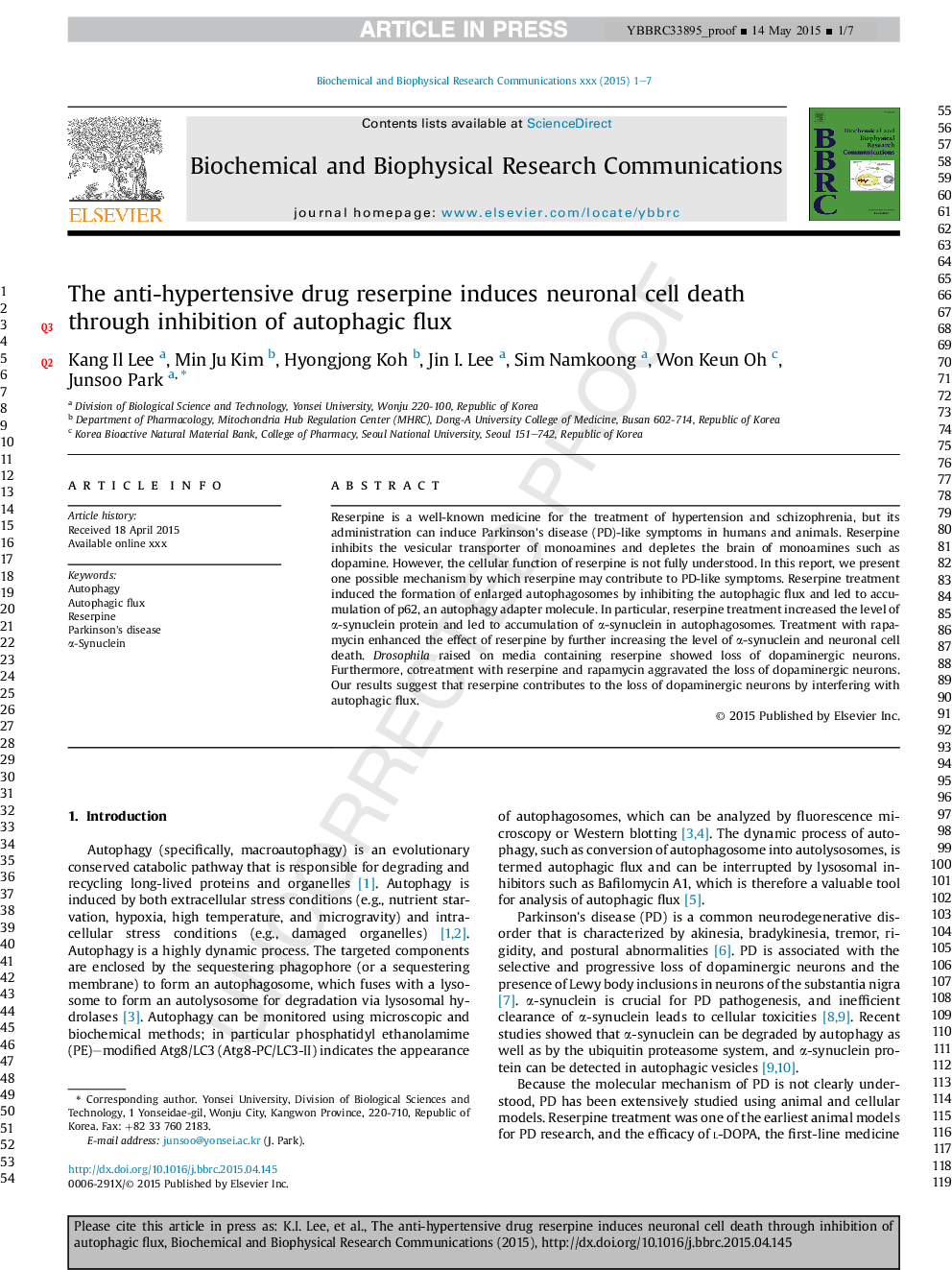| Article ID | Journal | Published Year | Pages | File Type |
|---|---|---|---|---|
| 10751889 | Biochemical and Biophysical Research Communications | 2015 | 7 Pages |
Abstract
Reserpine is a well-known medicine for the treatment of hypertension and schizophrenia, but its administration can induce Parkinson's disease (PD)-like symptoms in humans and animals. Reserpine inhibits the vesicular transporter of monoamines and depletes the brain of monoamines such as dopamine. However, the cellular function of reserpine is not fully understood. In this report, we present one possible mechanism by which reserpine may contribute to PD-like symptoms. Reserpine treatment induced the formation of enlarged autophagosomes by inhibiting the autophagic flux and led to accumulation of p62, an autophagy adapter molecule. In particular, reserpine treatment increased the level of α-synuclein protein and led to accumulation of α-synuclein in autophagosomes. Treatment with rapamycin enhanced the effect of reserpine by further increasing the level of α-synuclein and neuronal cell death. Drosophila raised on media containing reserpine showed loss of dopaminergic neurons. Furthermore, cotreatment with reserpine and rapamycin aggravated the loss of dopaminergic neurons. Our results suggest that reserpine contributes to the loss of dopaminergic neurons by interfering with autophagic flux.
Related Topics
Life Sciences
Biochemistry, Genetics and Molecular Biology
Biochemistry
Authors
Kang Il Lee, Min Ju Kim, Hyongjong Koh, Jin I. Lee, Sim Namkoong, Won Keun Oh, Junsoo Park,
